AP-1 and clathrin are essential for secretory granule biogenesis in Drosophila
- PMID: 21490149
- PMCID: PMC3113773
- DOI: 10.1091/mbc.E11-01-0054
AP-1 and clathrin are essential for secretory granule biogenesis in Drosophila
Abstract
Regulated secretion of hormones, digestive enzymes, and other biologically active molecules requires the formation of secretory granules. Clathrin and the clathrin adaptor protein complex 1 (AP-1) are necessary for maturation of exocrine, endocrine, and neuroendocrine secretory granules. However, the initial steps of secretory granule biogenesis are only minimally understood. Powerful genetic approaches available in the fruit fly Drosophila melanogaster were used to investigate the molecular pathway for biogenesis of the mucin-containing "glue granules" that form within epithelial cells of the third-instar larval salivary gland. Clathrin and AP-1 colocalize at the trans-Golgi network (TGN) and clathrin recruitment requires AP-1. Furthermore, clathrin and AP-1 colocalize with secretory cargo at the TGN and on immature granules. Finally, loss of clathrin or AP-1 leads to a profound block in secretory granule formation. These findings establish a novel role for AP-1- and clathrin-dependent trafficking in the biogenesis of mucin-containing secretory granules.
Figures
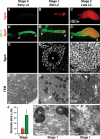
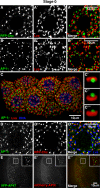
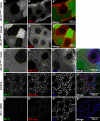
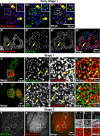
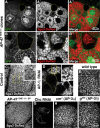

References
-
- Abrams EW, Andrew DJ. CrebA regulates secretory activity in the Drosophila salivary gland and epidermis. Development. 2005;132:2743–2758. - PubMed
-
- Abrams EW, Mihoulides WK, Andrew DJ. Fork head and Sage maintain a uniform and patent salivary gland lumen through regulation of two downstream target genes, PH4αSG1 and PH4αSG2. Development. 2006;133:3517–3527. - PubMed
-
- Ashburner M. Drosophila: A Laboratory Handbook. Cold Spring Harbor, NY:: Cold Spring Harbor Laboratory; 1990.
Publication types
MeSH terms
Substances
Grants and funding
LinkOut - more resources
Full Text Sources
Molecular Biology Databases
Miscellaneous

